 W
WAetiocetus is a genus of extinct basal mysticete, or baleen whale that lived 33.9 to 23.03 million years ago, in the late Oligocene in the North Pacific ocean, around Japan, Mexico, and Oregon, U.S. It was first described by Douglas Emlong in 1966 and currently contains known four species, A. cotylalveus, A. polydentatus, A. tomitai, and A. weltoni. These whales are remarkable for their retention of teeth and presence of nutrient foramina, indicating that they possessed baleen. Thus, Aetiocetus represents the transition from teeth to baleen in Oligocene mysticetes. Baleen is a highly derived character, or synapomorphy, of mysticetes, and is a keratinous structure that grows from the palate, or roof of the mouth, of the whale. The presence of baleen is inferred from the fossil record in the skull of Aetiocetus. Aetiocetus is known from both sides of the Pacific Ocean: it was first documented in Oregon, United States, but it is also known from Japan and Mexico. The genus is currently constrained to the Northern hemisphere and has little value in biostratigraphic studies of the Oligocene due to its limited occurrences across the Pacific.
 W
WBassipterus is a genus of eurypterid, an extinct group of aquatic arthropods. Bassipterus is classified as part of the family Adelophthalmidae, the only clade within the derived ("advanced") Adelophthalmoidea superfamily of eurypterids. Fossils of the single and type species, B. virgnicus, have been discovered in deposits of the Late Silurian age in West Virginia and Maryland, United States. The genus is named after Bass, where most of the fossils have been recovered.
 W
WBoii is an extinct genus of microsaur within the family Tuditanidae. It was found in Carboniferous coal from mines near the community of Kounov in the Czech Republic. The only remains of the genus consist of a crushed skull, shoulder girdle bones, and scales, which were similar to microsaurian elements originally referred to Asaphestera. Boii can be characterized by its heavily sculptured skull, thin ventral plate of the clavicles, and a larger number of fangs on the roof of the mouth. For many years the type and only known species, Boii crassidens, was considered to be a species of Sparodus, until 1966 when Robert Carroll assigned it to its own genus.
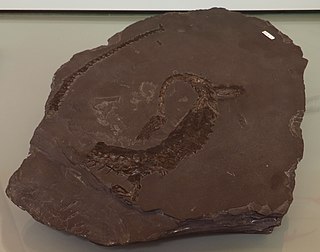 W
WBrazilosaurus is an extinct genus of mesosaur which lived during the early Permian of what is now Brazil. It is known from a skeleton recovered from the Assistencia Member of the Irati Formation, in the Paraná Basin. It was named by T. Shikama and H. Ozaki in 1966 and the type species is Brazilosaurus sanpauloensis.
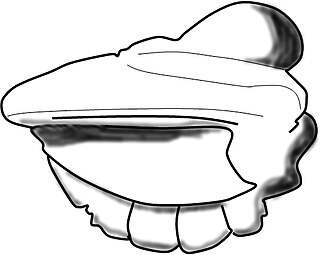 W
WChelediscus Rushton, 1966, is a genus of Eodiscinid trilobite belonging to the family Weymouthiidae Kobayashi T. (1943), Order Agnostida Salter (1864). The Treatise assigns this genus to the Calodiscidae; Cotton and Fortey (2005) however move it to the Weymouthiidae. Chelediscus lived during the later part of the Botomian stage.
 W
WClarkeipterus is a genus of prehistoric eurypterid classified as part of the family Dolichopteridae. The genus contains two species, C. otisius and C. testudineus, both from the Silurian Bertie Formation of the United States.
 W
WErnettia is an extinct genus of Ediacaran organisms with an infaunal lifestyle. Fossil preservations and modeling indicate this organism was sessile and “sack”-shaped. It survived partly buried in substrate, with an upturned bell-shaped frill exposed above the sediment-water interface. Ernietta have been recovered from present-day Namibia, and are a part of the Ediacaran biota, a late Proterozoic radiation of multicellular organisms. They are among the earliest complex multicellular organisms and are known from the late Ediacaran. Ernietta plateauensis remains the sole species of the genus.
 W
WThe Cretan dwarf hippopotamus is an extinct species of hippopotamus from the island of Crete. Hippopopotamus colonized Crete probably 800,000 years ago and lived there during the Middle Pleistocene. Bones of H. creutzburgi were found by Dorothea Bate on the Katharo plateau, in eastern Crete, in the 1900s. A similar species, the Cyprus dwarf hippopotamus lived on the island of Cyprus until the Holocene. It was at least 20% smaller than either subspecies of Cretan hippo.
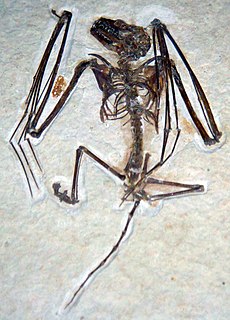 W
WIcaronycteris is an extinct genus of microchiropteran (echolocating) bat that lived in the early Eocene, approximately 52.2 million years ago, making it the earliest known definitive bat. Four exceptionally preserved specimens, among the best preserved bat fossils, are known from the Green River Formation of North America. There is only one thoroughly described species of bat in the genus, I. index, although fragmentary material from France has also been tentatively placed within Icaronycteris as the second species I. menui. I. sigei is based on well-preserved fragments of dentaries and lower teeth found in Western India.
 W
WKvabebihyrax kachethicus is an extinct hyrax from the Pliocene of the Caucasus.
 W
WMahavisaurus is an extinct genus of rhytidosteid temnospondyl from the early Triassic period of Iraro, Madagascar. It is known from the holotype MNHN MAE 3037, a nearly complete skull, recovered from the Middle Sakamena Formation. This genus was named by J. P. Lehman in 1966, and the type species is Mahavisaurus dentatus.
 W
WMawsonites is a fossil genus dating to the Ediacaran Period from 630 – 542 million years ago during the Precambrian era. The fossils consist of a rounded diamond shape, made up from lobes radiating out from a central circle roughly 12 cm in diameter. There are about 19 radiations from the central circle.
 W
WOvatoscutum concentricum is one of many enigmatic organisms known from the Ediacaran deposits of the Flinders Ranges, Australia, and the White Sea area in Russia, dating around 555 Ma.
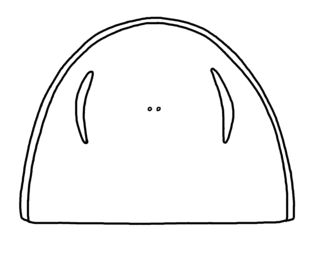 W
WPittsfordipterus is a genus of eurypterid, an extinct group of aquatic arthropods. Pittsfordipterus is classified as part of the family Adelophthalmidae, the only clade in the derived ("advanced") Adelophthalmoidea superfamily of eurypterids. Fossils of the single and type species, P. phelpsae, have been discovered in deposits of Silurian age in Pittsford, New York state. The genus is named after Pittsford, where the two only known specimens have been found.
 W
WProbactrosaurus is an early herbivorous hadrosauroid iguanodont dinosaur. It lived in China during the Late Cretaceous period.
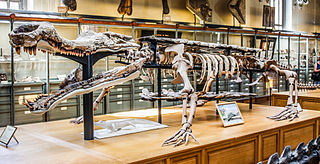 W
WSarcosuchus is an extinct genus of crocodyliform and distant relative of living crocodylians that lived during the Early Cretaceous, from the late Hauterivian to the early Albian, 133 to 112 million years ago of what is now Africa and South America. It was one of the largest crocodile-line reptiles, reaching an average estimate of 9 m (30 ft) and 3.5 metric tons, but estimated to grow up to 9.5 m (31 ft) in body length and weigh up to 4.3 metric tons. It is known from two species, S. imperator from the early Albian Elrhaz Formation of Niger and S. hartti from the Late Hauterivian of northeastern Brazil, other material is known from Morocco and Tunisia and possibly Libya and Mali.
 W
WSimosthenurus, also referred to as the short-faced kangaroo, is an extinct genus of megafaunal macropods that existed in Australia, specifically Tasmania, during the Pleistocene. Analysis of Simosthenurus fossils has contributed to the finding that there are three lineages of macropods: Sthenurinae, Macropodinae, and Lagostrophinae. The genus Simosthenurus was among the sthenurines.
 W
WTommotia is a small shelly fossil from the Early Cambrian Period. Originally, only a cone-shaped shell was recognized, which was originally thought to be an early cephalopod, with either squid-like tentacles or a snail-like foot. More recent investigation has shown that the cone is not the remains of a complete animal, but a sclerite of a larger, soft-bodied animal that would have resembled a chiton or a sea mouse. The fossils called Camanella may be another type of sclerite from the same animal.
 W
WTullimonstrum, colloquially known as the Tully Monster, is an extinct genus of soft-bodied bilaterian that lived in shallow tropical coastal waters of muddy estuaries during the Pennsylvanian geological period, about 300 million years ago. A single species, T. gregarium, is known. Examples of Tullimonstrum have been found only in the Mazon Creek fossil beds of Illinois, United States. Its classification has been the subject of controversy, and interpretations of the fossil have likened it to molluscs, arthropods, conodonts, worms, and vertebrates.